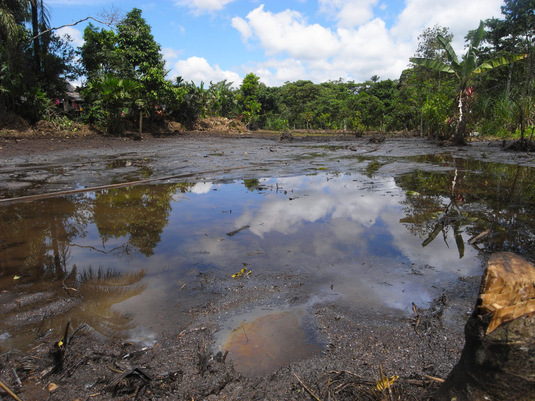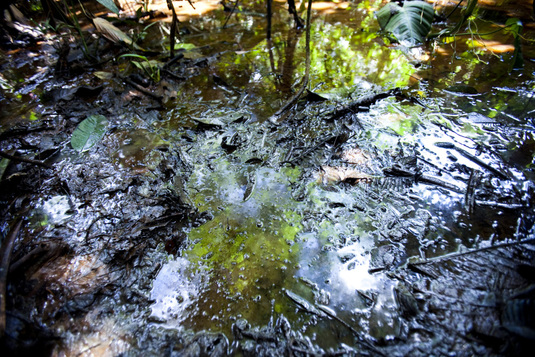Student Research: Environmental (In)justice – The Case of Chevron-Texaco in Ecuador
29.05.2017
By Camila Cabrera
Ecuador, a small country located on the equator, bounded by the Pacific Ocean to the west, traversed by the Andes mountain range, and covered by part of the Amazon rainforest in the east, is one of the most biodiverse countries in the world. Nevertheless, as Nathalie Cely, the former Ecuadorian ambassador to the United States, stated, “underneath this natural beauty lies both a treasure and a curse: oil.”
Oil was discovered in the Ecuadorian Amazon in 1967 by the petroleum company Texaco. Rapidly, they began large-scale exploitation, generating impressive national revenues not seen in the past. However, such economic fortune did not bring equivalent social and environmental advantages.
As the political analyst Julio Ballesteros has stated, the Amazon has long been an isolated territory not only geographically but also anthropologically. For centuries, its inhabitants have subsisted thanks to the abundant vegetation and availability of natural resources such as water. Despite the presence of human groups in this area, the oil company generated around 18 billion gallons of toxic water, which drained directly into soils and watersheds.

Lago Agrio area. Photo by Julien Gomba. Available under a CC BY 2.0 licence, https://www.flickr.com/photos/jgomba/2076767784/in/photostream/.
During the 26 years of Texaco’s operation in Ecuador, more than 339 oil wells were drilled in an area of around 430 hectares, extracting 1,500 million barrels of oil and burning thousands of millions of cubic feet of gases. For years, contaminated water, as well as other natural resources, was ingested by local individuals, both animal and human beings, on a daily basis.
Attempting to quantify environmental harm in economic terms is a complicated task. Nevertheless, a publication from the World Rainforest Movement estimates the damages resulting from Texaco’s actions in the tens of billions of dollars—this includes causing the deaths of domestic and wild animals, appropriating natural resources, underpaying workers, and causing diseases. This last element indicates a public health crisis: among people living adjacent to oil wells or in the same Amazonian territory, cancer rates of 31 cases per 1,000 people, compared with the national average of 12 cases per 1,000 people, have been observed.
The disproportionate harm suffered by inhabitants of the region motivated activists to create a group named the “Comité de Derechos Humanos de Shushufindi” (Human Rights Committee of Shushufindi) in 1989, which sought effective and real environmental remediation. In 1993, affected residents of the Oriente (eastern) region of the country, together with the new organization, sued the oil company Texaco (later acquired by Chevron in 2001). The company was accused of “the dumping of around 80,000 tons of oil and toxic residues on their land between 1964 and 1990 during operations in the Lago Agrio region of northeastern Ecuador,” as stated in an article written by Claudia Garcia for Deutsche Welle.

Crude contaminates the Aguarico 4 oil pit, an open pool abandoned by Texaco after 6 years of production and never remediated. Photo by Caroline Bennett / Rainforest Action Network. Available under a CC BY-NC 2.0 licence, https://www.flickr.com/photos/rainforestactionnetwork/4858073943.
Read more of this article on Seeing the Woods.

